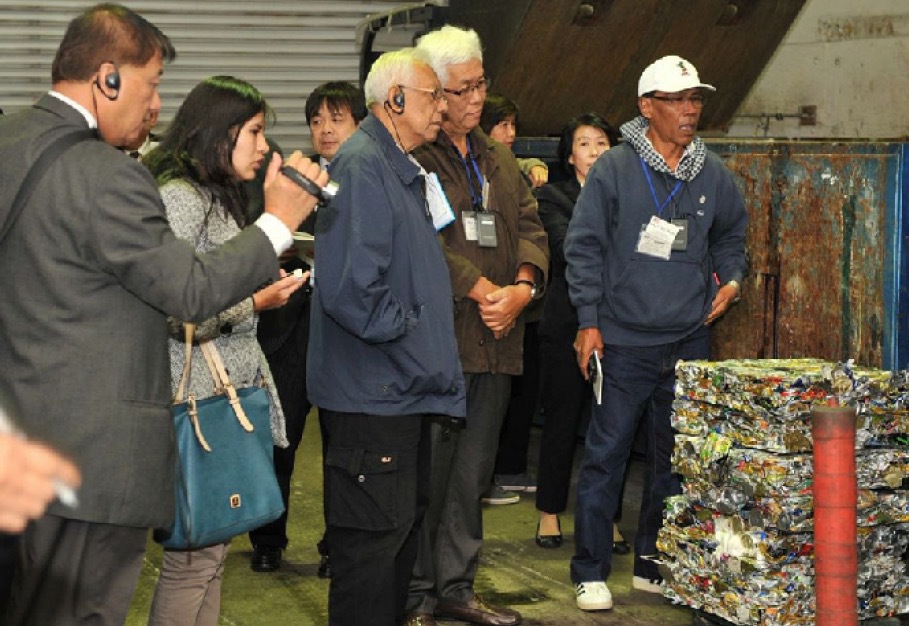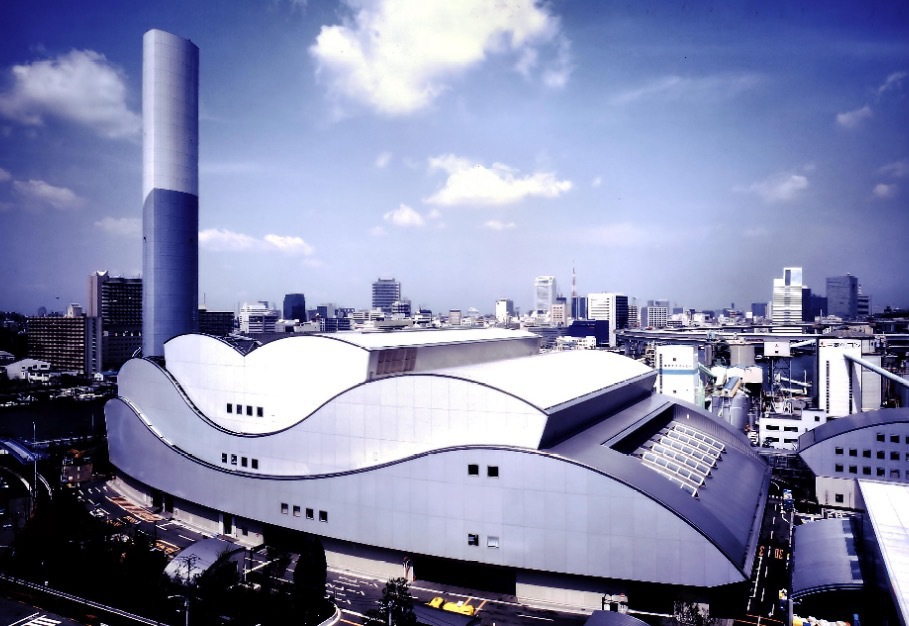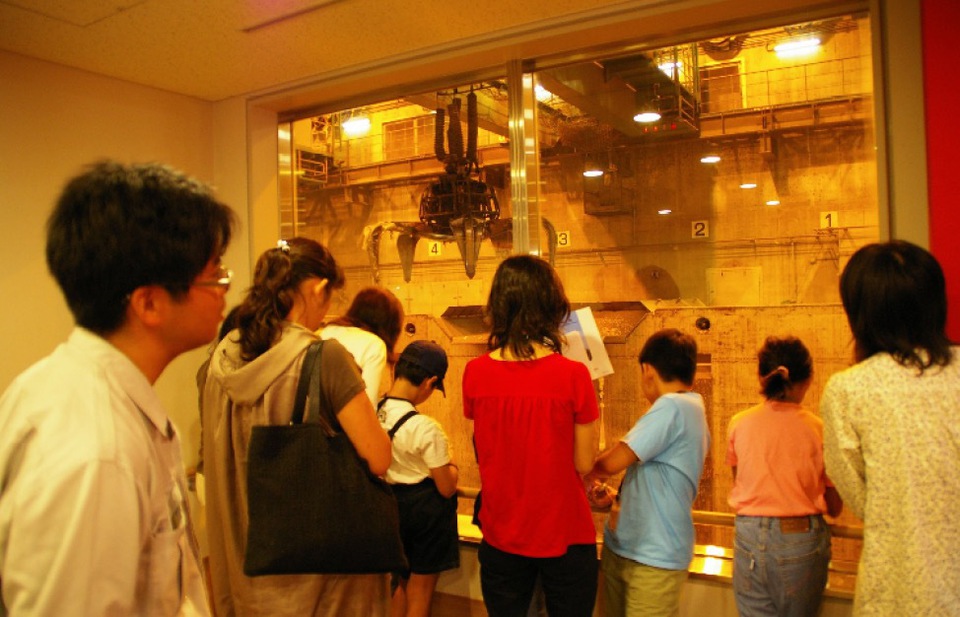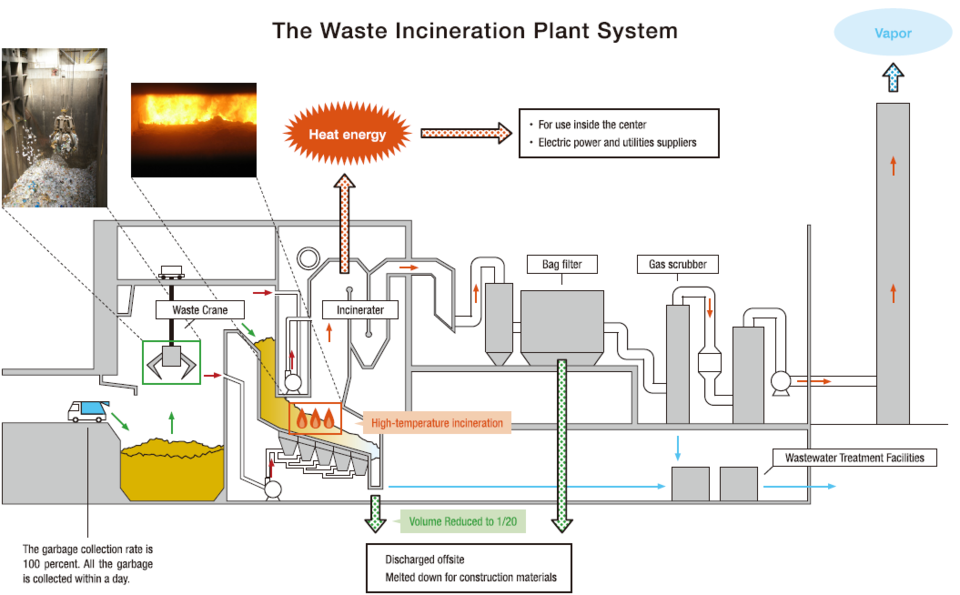Look at the photograph of the building at the top of the next page. Can you tell what it is for? This building with a sophisticated modern design is actually a center for waste disposal. It’s the key that helps maintain cleanliness in the Japanese capital, one of the leading cities in the world and also highly regarded for its efforts to preserve the environment.
There are nineteen waste incineration plants in the central part of Tokyo. For many people, waste incineration plants have a negative image, associated with dirtiness and air pollution. But with the latest technology, waste disposal methods are actually efficient and environmentally friendly.
Household waste generated by approximately 9 million people (roughly 8,000 tons per day) is put out for disposal, collected within a day, and transported to waste incineration plants. The garbage collection rate is 100 percent. At the plant, the garbage is first mixed with a large crane so that all the different kinds and sizes of items are uniformly distributed for easier burning. Next, the waste is incinerated at extremely high temperatures, over 800°C (1,472°F). This reduces not only the volume to 1/20 of what it was but also the amount of dioxin gases produced by incineration. Multiple provisions are made to prevent gases and harmful substances emitted during incineration, such as sulfur oxide and particulate matter, from being emitted outside the facilities. Chimneys of waste incineration plants emit vapor—not smoke—that does not contain harmful substances. Heat energy produced by the incinerator is used to supply the electricity needs of the entire facility, with any remainder being sold (earning approximately JPY 9.8 billion annually, or USD78.6 million, in income from electricity). High-temperature water is also supplied to neighborhood swimming pools and tropical plant greenhouses.
Compared to 1989, the peak year for solid waste generation, the total amount generated now is 40 percent less and continuing to decrease, despite the population growth. Welcoming residents to tour the waste incineration plants and active consultation with the community and ward residents, raises awareness of the 3Rs “Reduce, Reuse, and Recycle” and environmental issues. As many as 70,000 elementary and junior high school students take such tours each year, as part of a particular emphasis on connecting with children, who will take on the burdens of the next generation.
Every year an increasing number of visitors from overseas come to study the waste incineration plants and the technology that enables their stable operation in the midst of a big city. Experts are also sent overseas. Examples of their efforts include providing comprehensive training for Malaysia, consulting on waste incineration plants design and teaching Malaysian government employees about building consensus with residents. In addition, they have also begun residents’ exchanges to raise environmental awareness.
Cities around the world are dealing with serious waste problems due to increasing population and changing lifestyles. The city of Tokyo hopes to contribute to solving their problems using its efficient and environmentally friendly waste disposal system.

In November 2014, thirteen visitors from Malaysia toured the Recycling Center as part of the Partnership Program on Waste Management in Tokyo and Malaysia, organized by the Japan International Cooperation Agency. In 2015, Japanese residents will visit Malaysia in turn to continue the project .

































































































































